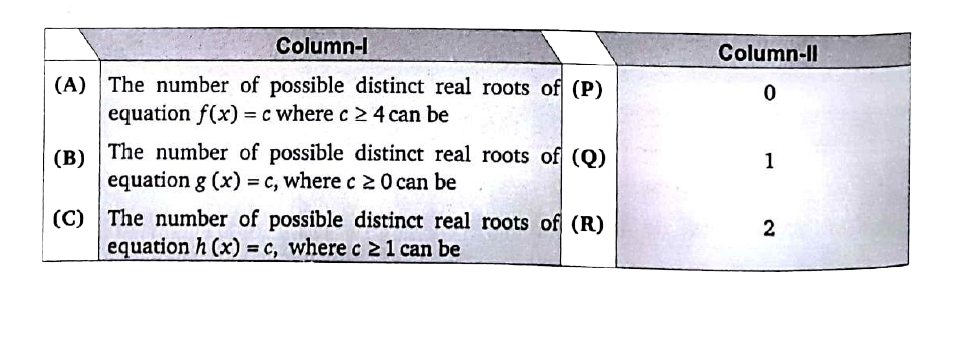If (f(x)−1)(x2+x+1)2−(f(x)+1)(x4+x2+1)=0
∀x∈R−{0}andf(x)≠±1, then which of the following statement (s) is/are correct ?
A
∣f(x)≥2∀x∈R−{0}
B
f(x) has a local maximum at x=−1
C
f(x) has a local minimum at x=1
D
∫π−π(cosx)f(x)dx=0
Video Solution
Text Solution
The correct Answer is:A, B, C, D
|
Answer
Step by step video, text & image solution for If (f(x)-1) (x ^(2) + x+1)^(2) -(f (x)+1) (x^(4) +x ^(2) +1) =0 AA x in R -{0}and f (x) ne pm 1, then which of the following statement (s) is/are correct ? by Maths experts to help you in doubts & scoring excellent marks in Class 12 exams.
Updated on:21/07/2023Topper's Solved these Questions
- APPLICATION OF DERIVATIVES Book:VK JAISWALChapter:APPLICATION OF DERIVATIVES Exercise:EXERCISE (COMPREHENSION TYPE PROBLEMS)
Explore 16 Videos
- APPLICATION OF DERIVATIVES Book:VK JAISWALChapter:APPLICATION OF DERIVATIVES Exercise:EXERCISE (MATCHING TYPE PROBLEMS)
Explore 8 Videos
- APPLICATION OF DERIVATIVES Book:VK JAISWALChapter:APPLICATION OF DERIVATIVES Exercise:EXERCISE (SUBJECTIVE TYPE PROBLEMS)
Explore 22 Videos
- AREA UNDER CURVESBook:VK JAISWALChapter:AREA UNDER CURVESExercise:EXERCISE (SUBJECTIVE TYPE PROBLEMS)
Explore 8 Videos
Similar Questions
Knowledge Check
If p(x) is a common multiple of degree 6 of
the polynomials f(x) = x3+x2−x−1 and
g(x)=x3−x2+x−1 then which one of the
following is correct ?Af(f(fg(g(f(x)))))=g(g(f(g(f(x)))Bf(f(g(g(g(f(x)))))=g(g(f(g(f(x)))))C(f(g(g(f(g(g(fx))))=g(g(f(g(f(x))))Df(f(f(f(g(g(f(x))))=f(f(g(f(x))))Let f:I−{−1,0,1}→[−π,π] be defined as f(x)=2tan−1x−tan−1(2x1−x2), then which of the following statements (s) is (are) correct ?
Af(x) is bijectiveBf(x) is injective but not surjectiveCf(x) is neither injective nor surjectiveDf(x) is an odd functionIf f(x)=x2+1x,x≠0 then f(1x)=
A1x2+xB1x+x2C1x2−xD1x−x2
Let f(x)=x3−4(x−1)3∀x≠1,g(x)==x4−2x24∀x∈R,h(x)x3+4(x+1)3∀x≠−1,


View SolutionIf f(x)+2f(1−x)=x2+2∀x∈R, then f(x) given as
View Solutionf(x)+2f(1−x)=x2+2,∀x∈R then f(x)=
View SolutionIf f(x)+2f(1−x)=x2+2∀x∈R then f (x) is equal to
View SolutionLet f:R→andf(x)=x(x4+1)(x+1)+x4+2x2+x+1, then f(x) is :
View Solution